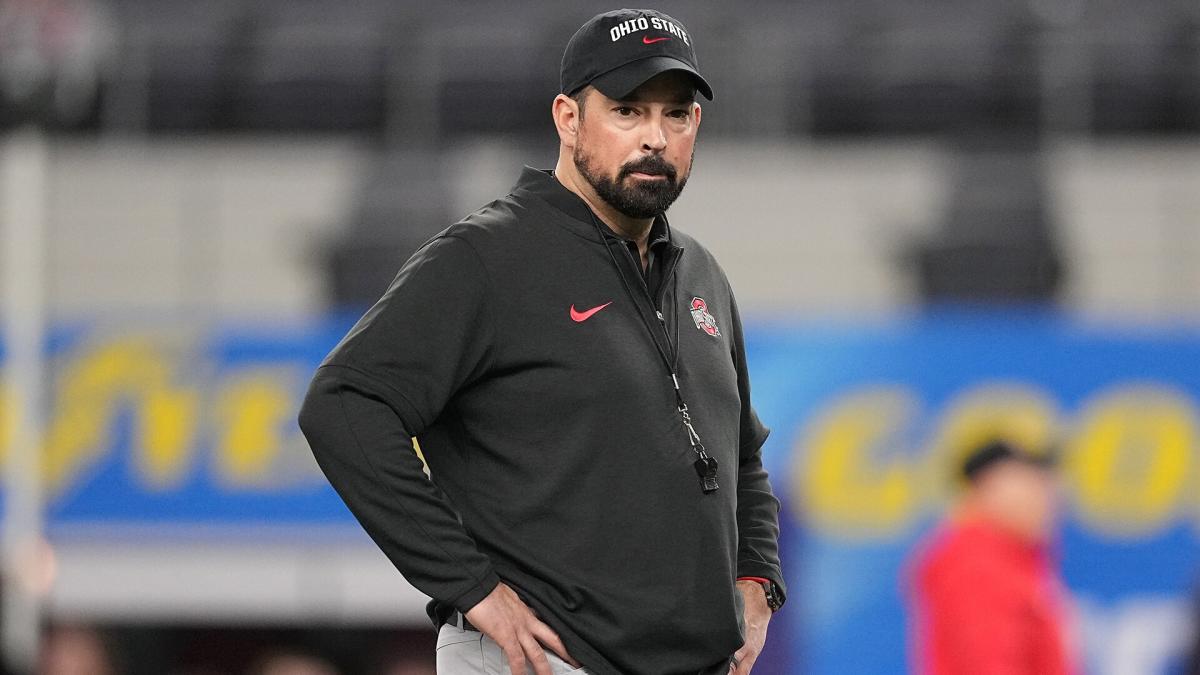
The Big Ten is bigger than ever before, with 18 schools in three different time zones and a footprint that stretches from the Pacific Ocean to the Atlantic. This will undoubtedly be a season unlike any other in the league’s history.
With kickoff for all 18 teams mere days away, we wanted to pose one pressing question for each program to explain how its answer will define the season. Teams are organized by tiers.
The preexisting perennial powers
Ohio State: Can this team win a national title?
It’s a championship-or-bust kind of season in Columbus. The roster is filled to the brim with talent, with multiple NFL-caliber players opting against declaring for the draft and major transfer portal additions that included two of the best players in the entire SEC in Alabama safety Caleb Downs and Ole Miss running back Quinshon Judkins. Ohio State officials have said that $20 million in NIL helped retain and attract such talent. Now, the hard part begins — as a team with a massive bullseye on its back prepares to actually play and win the games it needs to.
Head coach Ryan Day has gone 53-8 over his five years at Ohio State, a winning percentage only topped by Kirby Smart over the same span. But the games Day has lost have been the ones that typically define success for the Buckeyes. He and Ohio State have lost three consecutive games to Michigan, and to make matters even worse, the Buckeyes then had to sit at home and watch the Wolverines win a national championship last January. The sense of urgency for Day and co. to not just beat Michigan but to get back to playing for national titles is very real — and all-consuming.
Michigan: How far can the defense carry this team?
These Wolverines are the reigning national champions, but so much of the conversation around this program isn’t about repeating — mostly because of how much turnover there has been both on the coaching staff and along the roster. Jim Harbaugh left for the Los Angeles Chargers and took with him basically his entire defensive staff. A program-record 13 players from the 2023 team were taken in April’s NFL draft. On the offensive side of the ball, Michigan will be replacing J.J. McCarthy with a quarterback who has either not completed a pass in a college game (Alex Orji, the frontrunner) or a former walk-on who has completed five passes total in his career (Davis Warren). The only returning offensive starter is Colston Loveland, who is expected to be the focal point of the passing game and could be the best tight end in the country this year.
Defensively, Michigan should be loaded again, led by two of the nation’s best interior linemen in Mason Graham and Kenneth Grant. Can that side of the ball carry the load until the offense rounds into form? A challenging schedule awaits — one that includes games against Texas and USC in the first month of the season — but this is a program that has long prided itself in its defensive identity and doing enough to control games on offense. That shouldn’t change under Sherrone Moore, and if Michigan’s defense can lead the way, this should be a team in the CFP mix come November.
Penn State: With barriers to entry removed, can the Nittany Lions finally make the CFP?
Penn State has been the poster child for the 12-team College Football Playoff, the program that would have benefitted the most from an expanded field over the past decade of the four-team CFP era. James Franklin doesn’t like that designation, and it’s easy to see why. You’re the team that was close but not close enough, the program that would have needed help to get into the sport’s marquee postseason event because it existed in the same division as Ohio State and Michigan for all those years. It was a brutal existence, a season that boiled down to the one or two games on the schedule that the Nittany Lions couldn’t win and were enough to keep them out of the CFP.
But divisions are gone, and the CFP will now include 12 teams. There are seven at-large spots each year, which means lots of access for teams in the Big Ten and SEC that don’t win their conference championships. Penn State now faces a great deal of pressure to make the expanded CFP field in Year 1. There’s no Oregon or Michigan on the schedule. There’s a new offensive coordinator in Andy Kotelnicki whose creativity and experience is expected to unlock something new in quarterback Drew Allar, even with some unproven receivers around him. For Penn State, it’s simple. If not now, when?
The newcomers
Oregon: Can Dan Lanning win The Big One?
It’s easy to forget Lanning has only been a head coach for two full seasons because he’s been one of the best coaches in the country with a 22-5 record during that span — and he was the first name on the lips of pundits when the head coaching jobs at Texas A&M and Alabama opened. Lanning famously and emphatically chose to stay at Oregon and has said repeatedly that he hopes to stay in Eugene for a long time to come. It was a huge moment for the Ducks as they head into their first season in the Big Ten, and it was also big for a program that believes Lanning can guide it to its first football national championship.
To do that, though, Lanning will have to beat teams such as Ohio State and Michigan. He’ll likely have to go toe-to-toe with Kirby Smart’s Georgia team. He’ll need to win the biggest games on Oregon’s schedule. Last year, the Ducks dropped two games to Washington (which eventually played for a national title). The year before, they got blown out by Georgia (the eventual national champion), lost to Washington and got upset by Oregon State. These aren’t terrible losses by any means, but those results end up being the difference between a really good program and one that’s a true national title contender. Signature wins are what Lanning has been missing to date, though a true national title contender is precisely what the Ducks can and should be this season. It’s time to prove it, starting with a massive matchup against Ohio State at home in October.
Washington: Can Jedd Fisch replicate the winning formula he used at Arizona?
Fisch inherited a Wildcat program that had gone winless the season before he arrived. In Year 3, Arizona went 10-3 with a win in the Alamo Bowl, just the fourth 10-win season in program history. Fisch then left for Washington, bringing with him most of his assistant coaches and support staff, to do it all over again. Now, what he’s walking into is very different from what he walked into at Arizona. The Huskies just played in the national championship game, of course. But they are in a period of great transition — the late coaching change, with Kalen DeBoer leaving for Alabama, plus the conference move — and roster turnover that was among the most drastic in all of college football. This roster is, essentially, entirely different from the one that played Michigan for a national title; that team was led by Heisman finalist Michael Penix Jr. under center.
Washington will be young and inexperienced this season, which means there aren’t unreasonably high expectations for the Huskies. And that’s a good thing, because Fisch and co. need to lay the groundwork for their version of this Washington program, and that’s what Year 1 is about. Soon we’ll see if what worked in the desert works up in Seattle.
USC: How will the Trojans fare in the post-Caleb Williams era?
This question encompasses the myriad concerns most of us have about Lincoln Riley’s program as it heads into the Big Ten. Obviously, we all want to see defensive improvement and the impact of all of the staffing hires that Riley made on that side of the ball. If the Trojans can be something close to average on defense, they should be able to beat or at least hang with every opponent on their schedule. But that’s a big if, considering how many missed tackles and missed assignments we’ve seen in recent years. Heisman Trophy-winning quarterback Caleb Williams made up for a lot of the defensive deficiencies over the years (as well as issues with the offensive line) because of his spectacular playmaking ability. But he’s gone now.
How will Riley adapt this offense to the strengths of quarterback Miller Moss? What made a three-year backup the best choice to lead the Trojans this season? Moss dazzled in USC’s Holiday Bowl win over Louisville, throwing for 372 yards and accounting for six touchdowns in the 42-28 win — a performance that kept Riley from dipping into the transfer portal to add another quarterback to the roster. Now, we’ll get to see what this Riley-Moss marriage looks like and how prepared this team is, on both sides of the ball, for a conference that prides itself on its play in the trenches.
UCLA: What is the identity of a DeShaun Foster team?
Foster took over this Bruin football program back in February, and he’s been fairly quiet since — well, except for the time at Big Ten media days where he taught us all where UCLA is located (and then poked fun at himself for that viral moment afterward). He knows his alma mater well and understands the task ahead. Though he’s been reserved, his hires have spoken volumes. Foster brought in Eric Bieniemy to be his associate head coach and offensive coordinator, and he believes that Bieniemy (as well as an improved offensive line) can help quarterback Ethan Garbers perform like one of the best quarterbacks in the country.
We’ll learn quite a bit about these Bruins by early October, with back-to-back games against Oregon (at the Rose Bowl) and Penn State (in Happy Valley) that should give us a good gauge of what Foster wants his program to be in Year 1.
The group of teams formerly known as the Big Ten West
Iowa: Can the offense move the ball?
Ah, the age-old question for Iowa. Has there been offensive improvement? Can the Hawkeye offense be something closer to average and not among the worst in the nation in all of the major offensive categories? If Iowa can move the ball effectively (or even somewhat effectively), this is a team that should be in the mix for the CFP. The Hawkeyes have a favorable schedule that avoids Michigan, Penn State, Oregon and USC. They always have a terrific defense and great special teams unit. The limiting factor for Iowa has been the offense, and it will continue to be so until proven otherwise. But here’s to first-year coordinator Tim Lester, a healthier quarterback Cade McNamara and some real hope for improvement.
Wisconsin: Who are you?
We’re getting a bit existential here, but it’s by design. The Badgers need to figure out what they want their identity to be offensively, as they were torn between their past (a dominant rushing attack) and their ideal future (a Phil Longo pass-first air raid offense). Of course, that’s a tough transition after decades spent recruiting and scheming a certain way, but Year 2 should show some significant progress toward what Luke Fickell wants his offense to look like. But what does he want this program to be? A true national title contender. That’s what Wisconsin wants to be — well, at least those involved in the hiring of Fickell in the first place. The idea behind a big swing like Fickell is to build a program that can aim higher than simply winning the Big Ten West. Well, the West is gone, the Big Ten is bigger, the CFP is accessible to more teams than ever before, and Wisconsin’s goals should reflect that, too.
Nebraska: Should we believe the hype?
Matt Rhule is a elite program-builder who seems to be a perfect fit at Nebraska. Dylan Raiola is a five-star freshman quarterback who wants to carry this team on his back right away. Pair those two with a solid defense and a schedule that should allow the Huskers to reach bowl eligibility by Halloween … and it’s easy to get swept up in the preseason hype in Lincoln. It should be a season of exorcising demons for a Nebraska program that has found new and excruciating ways to lose in recent years and hasn’t been bowling since 2016.
Minnesota: Can the Gophers keep up in the new era of college football?
There are new styles of play coming into the Big Ten. There’s a ton of money flowing into so many programs across college football. There are a bunch of first-year coaches and high-profile coordinators ready to mix things up in both the league race and the national title hunt. And then there’s Minnesota, which has had the same head coach for seven years (going on eight) and has struggled in the NIL era to retain and attract talent. This could be a big year for this program to show what it can do and who it can be as everything changes around it.
RELATED: A guide to everything that’s changed in college football ahead of the 2024 season
Purdue: How can the Boilermakers get off the mat?
Last season was a rough one for Purdue, a year where everything that could go wrong went wrong. After a two-season stretch under head coach Jeff Brohm that included 17 wins and a Big Ten West title, things came crashing down in Ryan Walters’ first season at the helm. Neither the offense or the defense played particularly well on a consistent basis (though the offense had some nice flashes in the Boilermakers’ four wins). If Purdue can take care of the ball, get off the field on third downs and piece together an effective passing attack, the Boilermakers can get back on track. If they can’t, it could be another long season.
Illinois: How can the Illini turn back time?
Illinois had a breakthrough 8-5 campaign in 2022 and a letdown last season, winning just five games. The Fighting Illini were up and down over the course of 2023, never winning or losing more than two games in a row. And they did that with the league’s best defensive player up front in defensive tackle Jer’Zhan Newton, now with the Washington Commanders. The Illinois defense will have to fill Newton’s shoes (among others) and step up as a whole like it did in 2022 to give the Illini a chance to go bowling again, at the very least. Quarterback Luke Altmyer needs to be more consistent and efficient in his second season in Champaign, and the run game needs to get going behind this offensive line. If they do that, can the Illini recapture some of the magic they had just a couple of seasons ago? Or something close to it?
Northwestern: How do you prove last year wasn’t a fluke?
The Wildcats wrote one of the most unpredictable stories in all of college football last year after Pat Fitzgerald was fired on the eve of Big Ten media days. Interim head coach David Braun earned himself the full-time gig by leading a team that had previously won one game to an 8-5 record that included a bowl victory over Utah. So, what will Braun’s encore be? And how will transfer quarterback Mike Wright fare? Can a defense that forced a ton of turnovers a season ago continue to pounce on opponents?
RELATED: How the new 12-team College Football Playoff will actually work
Questions for the rest
Rutgers: How high can the Scarlet Knights go?
Greg Schiano has built Rutgers back up for a second time. It’s no longer about respectability — this is a team that should be good enough to play the Big Ten’s top teams tough and finish in the top half of the league standings (especially now that the East no longer exists). The Scarlet Knights win by playing Schiano ball, which means they have a stout defense and a great run game. Kyle Monangai could end up being the best running back in the country. The question for the Rutgers program is no longer about how to eke out a bowl bid but rather: How good a bowl game can the Scarlet Knights land?
Maryland: What’s the next step?
Mike Locksley’s group has won eight games in back-to-back seasons that included back-to-back bowl wins. That’s not bad at all for a program that, along with Rutgers, has been fighting to survive in the brutal Big Ten East for much of its existence in the conference (and had some sort of quarterback injury curse for far too long). But what comes next? What does a post-Taulia Tagovailoa offense look like? The Terps have some great skill players on offense and a sound defense. Can they finally piece it all together and get a signature win? Beat one of the Big Ten’s big boys? We’ll have to see.
Indiana: Can Curt Cignetti back up the talk?
The Hoosiers hired a yapper. Cignetti came to Bloomington after five seasons at James Madison, where he helped the Dukes transition from FCS to FBS (and remain competitive right out of the gate). He’s brash and unafraid to say things most people would find outlandish. Like when he said on television on his very first day on the job that Indiana would play for a Big Ten title in Year 1. Or when he took shots at Purdue, Michigan and Ohio State at an Indiana basketball game. Now, the Hoosiers have never won 10 games in a season, but Cignetti believes that he can take this program to places it’s never been before. He brought some key coaches and players with him from JMU and added one of the best MAC quarterbacks out of the portal in Kurtis Rourke. No one is penciling this team in for a trip to Indianapolis in December, but could Indiana surprise some folks this year?
Michigan State: What does success look like for Year 1?
The Spartans’ hiring of Jonathan Smith was one of the best hires of the offseason. Smith is a perfect fit for a program that prides itself on a blue-collar work ethic and its ability to beat its hated in-state rival. But Smith also inherited a program on a downswing (from a football standpoint) and also emerging from a scandal (that involved former head coach Mel Tucker’s off-field behavior). The cupboard is not bare, but expectations will be low for Year 1. Still, quarterback Aidan Chiles should be a bright spot, and there will likely be flashes of what we can expect to see from Smith’s program in the years to come.

Must See
-


Football
/ 2 months agoHuskers Fight Hard but Fall Short Against UCLA
LINCOLN – The Nebraska Cornhuskers gave it their all on Saturday, with standout efforts...
-
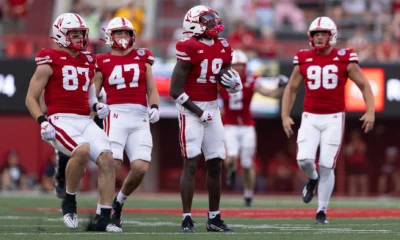

Football
/ 2 months agoGAMEDAY: Nebraska Set to Face Undefeated Indiana in Key Big Ten Showdown
Bloomington, IN – It’s Game Day, Husker Nation! Nebraska (5-1, 2-1 Big Ten) returns...
-


Football
/ 3 months agoBlackshirts Shine as Nebraska Tops Rutgers 14-7 on Homecoming
Lincoln, NE – Nebraska’s Blackshirt defense played a starring role in the Huskers’ 14-7...
By Chris


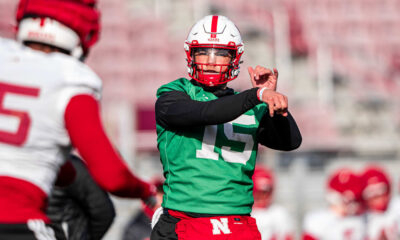

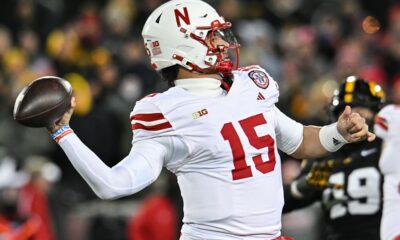

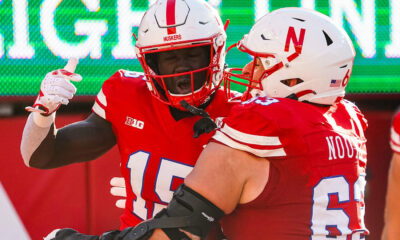

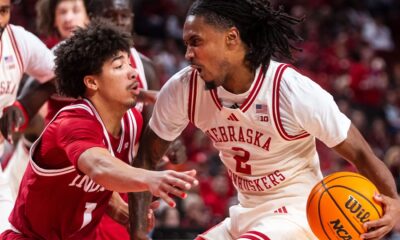

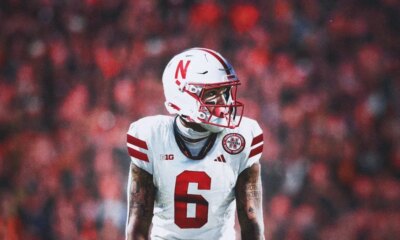






You must be logged in to post a comment Login